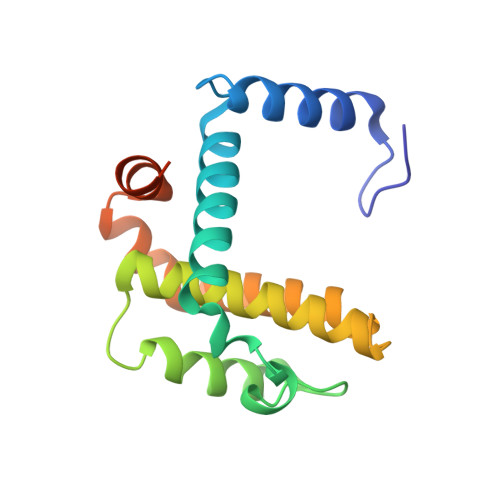De-Novo Designed Library of Benzoylureas as Inhibitors of Bcl-Xl: Synthesis, Structural and Biochemical Characterization.
Brady, R.M., Vom, A., Roy, M.J., Toovey, N., Smith, B.J., Moss, R.M., Hazis, E., Huang, D.C.S., Parisot, J.P., Yang, H., Street, I.P., Colman, P.M., Czabotar, P.E., Baell, J.B., Lessene, G.(2014) J Med Chem 57: 1323
- PubMed: 24456288
- DOI: https://doi.org/10.1021/jm401948b
- Primary Citation of Related Structures:
4C52, 4C5D - PubMed Abstract:
The prosurvival BCL-2 proteins are attractive yet challenging targets for medicinal chemists. Their involvement in the initiation and progression of many, if not all, tumors makes them prime targets for developing new anticancer therapies. We present our approach based on de novo structure-based drug design. Using known structural information from complexes engaging opposing members of the BCL-2 family of proteins, we designed peptidomimetic compounds using a benzoylurea scaffold to reproduce key interactions between these proteins. A library stemming from the initial de novo designed scaffold led to the discovery of ligands with low micromolar potency (KD = 4 μM) and selectivity for BCL-XL. These compounds bind in the canonical BH3 binding groove in a binding mode distinct from previously known BCL-2 inhibitors. The results of our study provide insight into the design of a new class of antagonists targeting a challenging class of protein-protein interactions.
Organizational Affiliation:
The Walter and Eliza Hall Institute of Medical Research , 1G Royal Parade, Parkville, Victoria 3052, Australia.

















